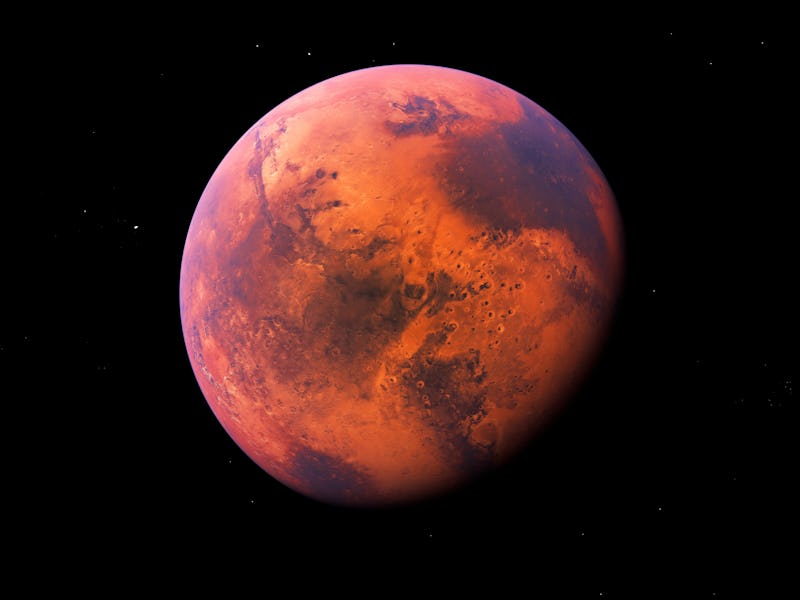Musk Reads: Recognize Mars as a 'free planet,' SpaceX says
Starlink public beta reaches more people and Crew Dragon faces a “nail polish” problem. Mining on Mars?

Starlink public beta reaches more people and Crew Dragon faces a “nail polish” problem. Mining on Mars? It’s Musk Reads: SpaceX Edition #215.
A version of this article appeared in the “Musk Reads” newsletter. Sign up for free here.
Musk quote of the week
“Very close to actual expected flight!”
- Read more about Musk’s praise for a new Starship animation.
SpaceX Starlink
The Starlink “Better Than Nothing” beta has started making its way to interested fans. The satellite internet constellation promises high speed and low latencies when it fully launches in the U.S. and Canada later this year, but for now, beta testers can expect speeds of 50 to 150 megabits per second. The beta test also reveals SpaceX’s intended pricing: $99 per month, plus $499 for the kit that includes ground terminal, a tripod, and a router. It’s not cheap, but it could offer a tantalizing alternative to Viasat and HughesNet. Read more.
That router looks particularly impressive – a Reddit user called “trynothard” has shared an image of the device that has some impressive Cybertruck-like angles. Read more.
Buried in the Starlink terms is also a commitment to recognize Mars as a “free planet.” Customers are asked to agree that “no Earth-based government has authority or sovereignty over Martian activities” and that disputes “will be settled through self-governing principles, established in good faith, at the time of Martian settlement.” SpaceX is aiming to establish a city on Mars by 2050, but whether the inhabitants can avoid the terms of the international Outer Space Treaty is perhaps another question. Read more.
What’s next for SpaceX: SpaceX is expected to launch the GPS III–4 mission on Thursday, November 5. The launch will take place at Space Launch Complex 40 at the Cape Canaveral Air Force Station in Florida.
In other SpaceX news…
- The Crew Dragon’s booster had a “nail polish” problem, it emerged last week. The issue turned up during last month’s October 2 launch, which was canceled with two seconds to go after two of the engines attempted to start early. The teams were able to identify a masking lacquer that had blocked a vent hole, and they found the same problem on the booster set for the Crew Dragon’s next launch. The mission, the capsule’s first non-test crewed flight, will take place November 14. Read more.
- NASA’s lunar water discovery could help human habitats like those planned by SpaceX. Read more.
- Want to know what Mars’ rocket fuel station could look like? Air Company, a New York City-based firm that turns carbon dioxide into new products, released four concept images of the future station. The firm has a working prototype of a system that takes carbon dioxide, water, and solar energy and turns it into liquid oxygen and methane – exactly what Starship needs to fuel its engines. Read more.
Musk Reads mailroom
Mr Satyre writes: Raw materials, of course, will be necessary for manufacturing. Is mining and refining possible on Mars?
Until we actually go into the asteroid belt and strike megatons of copper, or iron, or anything else that can be turned into CPUs, OLEDs, non-slip bath mats, and garden gnomes—and then figure out how to process those raw materials in zero G or in low Mars gravity—Mars will be entirely dependent on Earth for all machined goods.
What are your thoughts?
Interesting question. Mining Technology reported on a 2009 paper from the Mars Institute and the Australian Center for Astrobiology, which suggested there could be nickel, copper, titanium, platinum, iron, and more ready and waiting on the planet. NASA research has also found silicon dioxide that could make fiberglass. Musk has called for industries like iron foundries on Mars and suggested mining droids could get habitats going.
These efforts could transform Mars into the self-sustaining city envisioned by Musk – or perhaps a beacon of tech innovation as envisioned by Robert Zubrin. On a more practical note, the less you have to ship from Earth to Mars the better.
Aaron Kempf writes: Do you know more about the Starlink Beta? I live in an area where DSL is the best option, and it sucks. I am building a house right now, and the phone company wants to charge me $5000 to run cable to my new house.
But I would MUCH rather have Starlink.
The best way to register your interest in Starlink is via the website. Based on third-party reports, it seems SpaceX has already started shipping Starlink equipment to interested people. It may depend on your current location, as earlier beta tests were limited to American and Canadian users between 44 and 52 degrees latitude.
Got any comments or queries? Don’t forget to send them over to muskreads@inverse.com.
Video of the week
Starship full flight animation from Sweden-based artist Erik Corshammar and Twitter user “smvllstvrs.” The animation shows the Super Heavy booster paired with the Starship.
Got any photos or videos you’d like to share? Feel free to send them over to muskreads@inverse.com.
The ultra-fine print
This has been Musk Reads: SpaceX Edition #215, the weekly rundown of essential reading about futurist and entrepreneur Elon Musk. I’m Mike Brown, an innovation journalist for Inverse.
- Email me directly at mike.brown@inverse.com and follow Inverse on Twitter @inversedotcom. Follow me on Twitter @mikearildbrown.
- Got any comments or queries? Don’t forget to send them over to muskreads@inverse.com.
What did you think of today’s stories? Hit reply to this email to let us know. Thanks for reading!
A version of this article appeared in the “Musk Reads” newsletter. Sign up for free here.